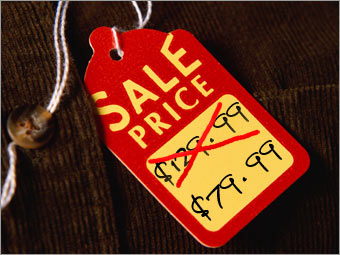You've no doubt seen an ad like this: "Was $175, is $100!" A study published last year in the
Journal of Marketing found that this tactic - called reference-price advertising - succeeds in making shoppers feel like they are getting a deal. Maybe you are, maybe you aren't.
Many states require products to be at the higher "reference" price for a certain minimum period to prevent deceptive advertising, but stores get around this by marking them up for the shortest time necessary. Or by rotating them.
"Say a retailer has eight models of mattresses, and consumers can't clearly tell one from another," says Donald Lichtenstein, professor of marketing at the University of Colorado. "The store can put each one at the lower 'sale' price for an eighth of the year." The retailer doesn't intend to sell any at the reference price, and research shows that they rarely do. This is why it's important to know MAP - so that you know when you're getting a deal and when you're getting bamboozled.

